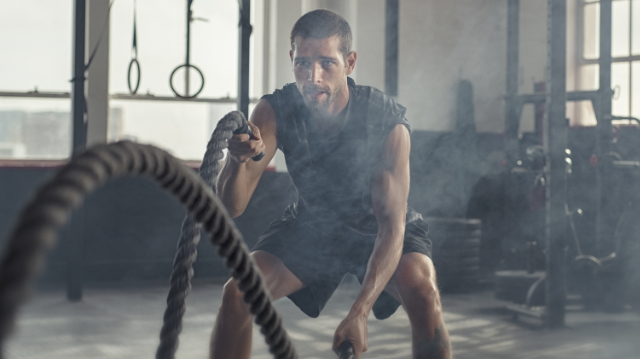
Regardless of an athlete’s age, sport, fitness level, or years of experience, some risk for injury will always exist. In general, the more contact and cutting movements that are involved in the sport, the higher the risk for acute-or traumatic-injuries. This explains why some of the highest rates of injury are found in basketball and football, since both elements are prevalent in both sports. But overtraining and failing to take adequate time to recover can also lead to injury in practically every sport.
Sports injuries often have both short- and long-term consequences that are important to understand. Immediately after an injury, an athlete will usually be sidelined for days or weeks, which temporarily prevents him or her from reaping the benefits of physical activity during that time. But when an athlete is unable to participate in a sport for several months or longer, it can lead to reduced fitness levels and weight gain if the athlete doesn’t find other ways to get active. In worst-case scenarios, athletes with severe injuries and those who return to their sport without completing rehabilitation may experience long-term impairments that prevent them regaining their pre-injury capabilities.
No athlete wants to get injured, and most should therefore be interested in finding the best ways to keep their risk for injury to a minimum. While there is unfortunately no silver bullet solution that can eliminate the risk for all injuries in all sports, there are several universal strategies that can significantly reduce it.
All athletes should participate in an injury-prevention program specific for their sport
One of the most effective ways to reduce the risk for injury is by participating in a training program specifically designed for this purpose. There are numerous sport-specific prevention programs that have been designed to improve athletes’ strength, flexibility, and conditioning by focusing on the dynamic movements involved in their sport. Research has continuously shown that these injury-prevention programs are effective for lowering the risk of injury in a variety of sports, including the two key studies summarized below:
- One study reviewed all the available research on exercise-based programs to reduce injury risk in tackle collision sports like American football, Australian football, and rugby. Nine studies were identified, and of these, seven supported the prevention programs as an effective method for lowering the incidence of injuries in these sports.
- Another study reviewed eight high-powered studies called meta-analyses on prevention programs for anterior cruciate ligament (ACL) tears. Results showed that the prevention programs led to a 50% reduction in the risk for all ACL injuries in all athletes and a 67% reduction for non-contact ACL injuries in females.
General guidelines and other tips to lower the risk for sports injuries
In addition to sport-specific injury-prevention programs, athletes of all sports should adhere to some general guidelines regarding how they train, how often they should rest, and the use of proper equipment. While some of these tips may seem like common sense, they can all go a long way in reducing injury risk:
- Warm up: always warm up before every practice and game/match; warm-ups should last at least 5-10 minutes and include low-level cardiovascular activities, stretching exercises, and movements that mimic those involved in your sport
- Ease into it: when returning to a sport or activity after an extended absence, start off gently and slowly, and gradually work your way up to more aggressive play or training
- Avoid overtraining: take enough time to rest and let your body recover in order to avoid overuse injuries, especially if you play one sport; a good rule of thumb is to take at least one day off per week and one month off per year from training in a single sport and switch over to other sports or activities during that time
- Use proper equipment: make sure that all of your gear-including pads, helmets, and other protective devices-is in good, working shape and fits properly; also be sure to wear the appropriate shoes for the appropriate sport, and replace old or worn-out shoes
- Improve your form or technique: whatever your spot, it’s essential that you’re using a form or technique that is helping you excel rather that adding to your injury risk; if you have a coach, they will be able to help you work on this; for others, see a physical therapist for guidance on improving your form
- Don’t play overly fatigued: if you feel too tired during a game or practice, don’t push yourself and sit out to recover; many injuries occur in athletes that are overly fatigued and incapable of performing at their optimal level, which is why it’s crucial to know where this line is drawn and how to respond if it’s crossed
In our next post, we’ll discuss the crucial role that physical therapy should play in helping athletes recover from sports-related injuries.
